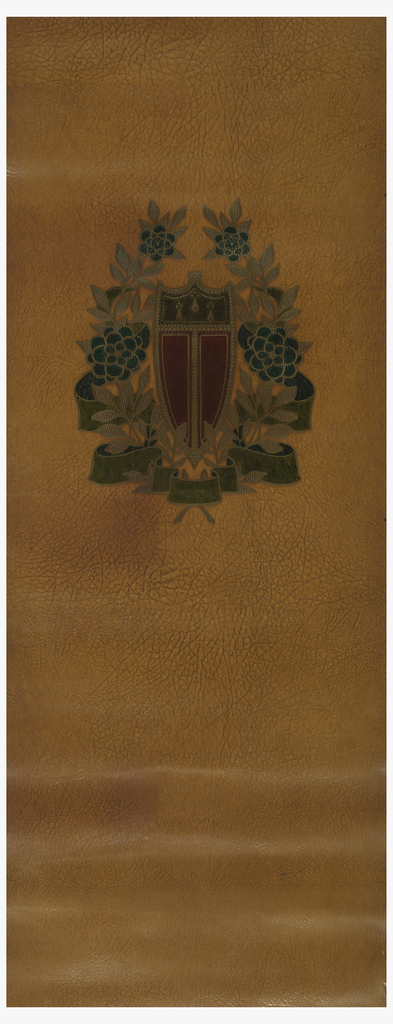This image is in the public domain (free of copyright restrictions), and as such we offer a high-resolution image of it. See our image rights statement.
See more objects with the color darkslategrey black silver or see all the colors for this object.
Object Timeline
|
1910 |
|
|
1915 |
|
|
2012 |
|
|
2024 |
|
Decorative Panel (USA)
This is a Decorative panel. It was manufactured by M.H. Birge & Sons Co.. It is dated 1910–15 and we acquired it in 2012. Its medium is block-printed paper, embossed, glazed. It is a part of the Wallcoverings department.
Imitation leather papers are meticulous reproductions of the grain, patterns, and coloring of antique leathers. Although this sample was produced by M. H. Birge & Sons around 1910, high-end leather papers had been popular since the late 19th century, with a renewed interest during the Colonial Revival movement of the early 20th century.
Birge received many accolades for their imitation leather papers, and produced these papers in both historic and contemporary styling. They also worked in actual leather if requested by a client. Leather papers were expensive because they were a labor-intensive product. The papers were block printed, embossed, and then antiqued or glazed by hand with an oil color. The paper support required substantial weight to withstand the embossing process.
Along with imitation leathers, a wide variety of relief papers came into vogue in the late 19th century, including: Lincrusta-Walton, a heavy, sanitary, embossed paper; Anaglypta, a lighter and more flexible version of Lincrusta; Tynecastle Canvas, canvas pressed by hand onto wooden molds; and grasscloth, a paper of woven grasses. It was very fashionable at the time for walls to have a sense of depth. Relief wallcovering or ingrain papers were used instead of flat painted walls. Leather papers were produced in Japan, across Europe, and in the United States.
This ornament panel is a mostly undecorated expanse of leather paper that showcases the beauty of the grain. The panel features an armorial shield or family crest printed at the top. Ornament panels were usually reserved for more formal installations and were installed within panel moldings or borders. This would be the first example of an ornament panel on imitation leather in the museum’s collection.
At the time of proposed acquisition, the museum’s collection includes over 90 samples of imitation leather papers produced in Japan, France, England, Germany, and the United States, with the majority of samples from Japan. There are currently more than 160 papers produced by Birge in the museum’s collection, many of which are printed designs produced during the Colonial Revival period.
This paper is part of a larger gift of four pieces of imitation leather paper produced by M. H. Birge & Sons. Founded in 1834, Birge was the major manufacturer of imitation leather papers in the United States in the early 20th century. It was also the oldest continuously-operating wallpaper company in the United States when it was sold to a Canadian concern in 1959. This proposed gift of four sample papers would be an asset to the collection by building upon the existing holdings of Birge production, American wallpapers (especially papers inspired by the Colonial Revival movement), and faux papers in general.
This object was
donated by
Mary Kate Conrad.
It is credited Gift of Mary Kate Conrad.
Its dimensions are
L x W: 153.7 x 55.9 cm (60 1/2 in. x 22 in.)
Cite this object as
Decorative Panel (USA); Manufactured by M.H. Birge & Sons Co. (United States); block-printed paper, embossed, glazed; L x W: 153.7 x 55.9 cm (60 1/2 in. x 22 in.); Gift of Mary Kate Conrad; 2012-14-1
